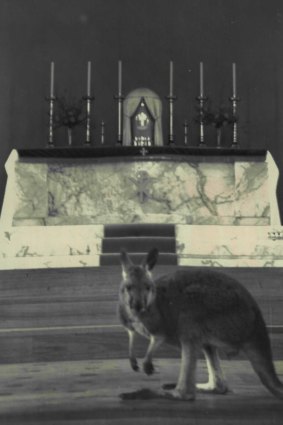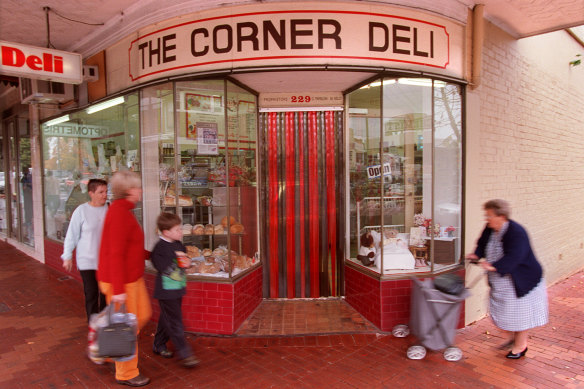My leafy suburb is a lovely place to live. Then I realised why it was nicknamed ‘Trashburton’

Save articles for later
Add articles to your saved list and come back to them any time.
When I told people we were moving to Ashburton in 2009, those of a certain vintage were sceptical. “Trashburton?” they said. “Why would you want to live there?”
I had no idea what they meant. It was leafy, affordable and still in zone 1 in Melbourne’s east. Unfortunately, I didn’t discover it was a dry area until the house sale had gone through. I thought that must be the reason for the unsavoury nickname. But there was no backing out now.
I loved taking walks along the KooyongKoot (Gardiners) Creek and Anniversary Trails. The cute little cafes that dotted High Street. The way the evening sun shone through the rust-coloured leaves every autumn. Trashburton? It was a lovely place to live.
Then one day I realised that High Street was not just a physical barrier in Ashburton, it was a psychological one too.
A kangaroo that hopped into Ashburton’s St Michael’s Parish church in 1959. It was shepherded outside by members of the ongregation.
I began delving into Ashburton’s history and discovered that the origin of this intra-suburb division was actually an inter-suburb one. The north side of High Street, with its neat red brick homes and gardens, was first developed in the 1920s. The new residents never had the opportunity to own homes before, and they spent the next two decades arguing with their ultra-conservative uncles in Camberwell for boring things like sanitation, drainage, roads and street lighting. It took eight years for the council to erect a fence around Ashburton Park so residents could play cricket without pushing cows off the pitch.
Then, in the mid-1940s, the Housing Commission built homes on the undeveloped south side of High Street. Now the poor cousins of Ashburton had new step-cousins in the south. Meanwhile, Camberwell decided the south side would be a perfect place for the council dump, in what is now Markham Reserve. That just about summed up what they thought of the place.
I learned that in these new homes, alcohol, poverty and violence bred wild and unruly teenagers. As the north-siders wrung their hands at the diminishing state of their treasured suburb, gangs and sharpies (named for their “sharp” style of dress) mugged people getting off trains on the Alamein line. Ashburton’s south side produced several notorious men, including the murderer of Maureen Ferrari and Rhonda Irwin, and the killer of Valerie Dunn and Tracey Greenbury. Ashburton’s bad reputation solidified.
But research shows the poverty created enviable community bonds. Over time, Ashburton began to unite in a quintessentially Australian way: through sport. We couldn’t drink at a pub or bar, but we could punch above our weight in cricket and Australian Rules football. For decades, as its population grew, Ashburton supported four cricket clubs and two football clubs. As the demographics shifted, football gave way to soccer, netball, basketball and junior football clubs that still thrive today. Win or lose, there was always the barrel of beer illegally sold in the clubhouse afterwards.
By the 1960s, everyone in Ashburton enjoyed High Street’s social and commercial vibe. Even the arrival of Chadstone Shopping Centre did not diminish it. Ashburton’s High Street hosted the first Brumby’s bakery, electronics chain E&S Trading, and a specialised group of shopkeepers that can still fix your dad’s old watch or your KitchenAid.
While the two sides of High Street largely reconciled, the external stigma of “Trashburton” lingered into the 1990s and 2000s. It remained even when Ashburton became where you bought if you couldn’t afford Glen Iris (Glen Iris being where you bought when you couldn’t afford Camberwell). The old houses on both sides gave way to large, developer-built homes in tasteful, if generic, shades of vanilla and monument. House prices began to surge.
The Corner Deli on High Street, pictured in 1999. Credit: Matthew Bouwmeester
It’s still cheaper on Ashburton’s south side. Yes, we do occasionally catch people rifling through our cars on our security cameras. Sometimes kids get trigger-happy with a spray can on the roads. One day last year I watched, gobsmacked, as a decrepit old concrete housing commission house in my street sold for nearly $2 million. Then a few days later, I woke up to a large penis and balls spray-painted on the road out front. That’s Ashburton for you.
These days, longevity is Ashburton’s stand-out characteristic: the median age of death, 89, is one of the highest in the country, no matter which side of High Street you’re on.
Maybe it’s because we still don’t back down without a fight. When the government released plans to rebuild social housing in 2014, Ashburton residents argued there were not enough homes in the proposal. These days, they’re pushing back against council plans to place a heritage overlay on High Street, worried it will inhibit the development of much-needed housing.
We now have more green space than the rest of Boroondara, thanks to the grassing-over of the old rubbish dump. Our sporting clubs are kept alive by strong family and community ties as much as the sale of alcohol. We have not one, but two bars. We can almost do a crawl. We’re out of Camberwell’s shadow and all grown up now.
Sarah Craze is a professional historian and writer living in Ashburton.
This article is part of our “Life in the ’burbs” series.
The Opinion newsletter is a weekly wrap of views that will challenge, champion and inform your own. Sign up here.
Most Viewed in National
From our partners
Source: Read Full Article

